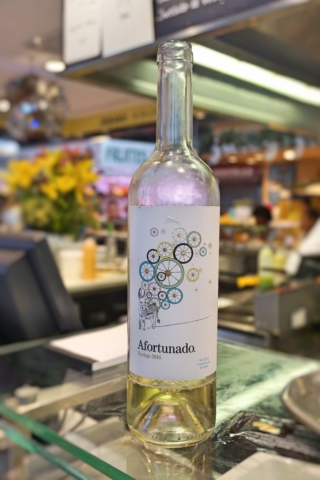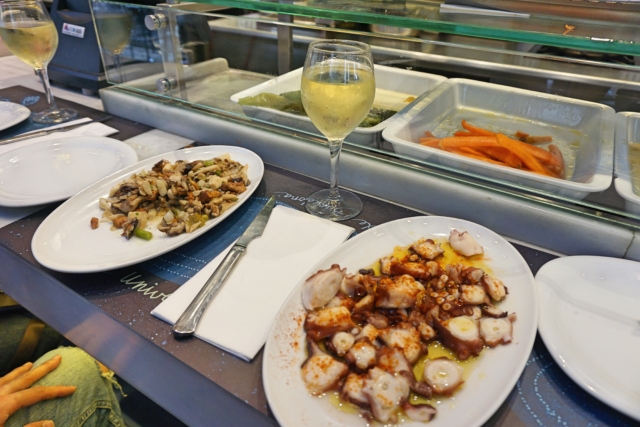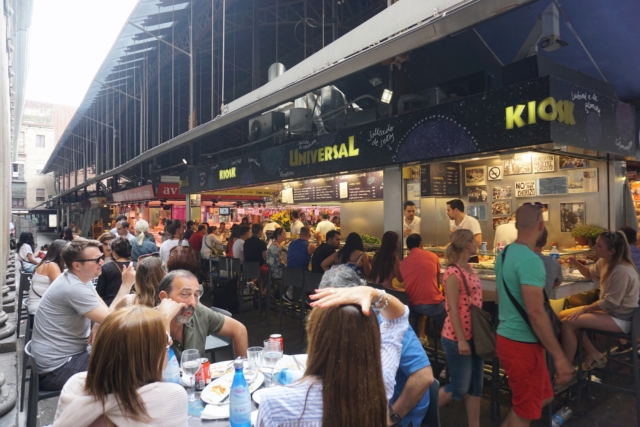The beauty of many Spanish dishes is how simple they are in both cooking methods and number of ingredients, and yet how they still manage to be incredibly delicious and versatile. It’s the same with seafood too: there are many regional varieties, but often all you’ll need for a delicious seafood dish is grilled, boiled or fried clam or mussel or shrimp, a little salt and a sprinkle of olive oil on top. Simple indeed, but such an indulgence.
Spain is a country that is surrounded by the sea. You have the Cantabric Sea to the North, the Mediterranean Sea to the South and East, and the Atlantic Ocean to the West. With no less than 3,400 kilometres of coastline and island groups such as the Balearics and Canaries, having access to such different marine climates means that there is a variety of seafood at the country’s doorstep which can be turned into wholesome, delicious meals.
Zoom in on Catalonia, an autonomous community in the Northeast of Spain, bordered by France and Andorra to the north, and by the Mediterranean Sea to the east. People here speak Spanish, but also Catalan and even the Aranese dialect of Occitan. They enjoy fish stews and Catalan creams, seafood platters and dishes sprinkled with olive oil. Zoom in again on Barcelona, Catalonia’s capital and largest city, and the second most populous municipality in the country after Madrid. People enjoy the hustle and bustle of a big city, but still find the time to revel in casual and flavourful food with friends and family. Now zoom in on the most famous food market in Barcelona, probably even of Spain.
The Mercat de Sant Josep de la Boquería, usually simply referred to as La Boquería by locals and tourists alike, has become one of the most famous landmarks in the old town centre of Barcelona and a fresh food market that is known the world over. What started out as a small meat market at the beginning of the 13th century turned into the fully-fledged, buzzing, and exciting market that we know today. Pork and other meat was sold, followed by flowers, and finally a section for fish in 1911. Perhaps one of the most defining characteristics of the market, its metal roof, was constructed only three years later in 1914.
Today, on a stroll through the bustling Boquería, we can find cheesemongers, greengrocers, fishmongers, and butchers selling their fare, and dozens of small charcuterie shops specializing in delicate and succulent Spanish hams and cured meats. Many of these sellers will in fact be fourth-generation La Boquería merchants – talk about tradition! Don’t be discouraged to visit the market if you’re not looking to cook with its fresh produce. With an entrance off the tree-lined pedestrian 1.2km-long street La Rambla, the Mercado is also a popular spot to stop for lunch. You will find many a small gourmet restaurant providing fresh seafood and Mediterranean specialties.
On a spontaneous stroll through the market that my friends and I went for not too long ago, we passed one such place called Kiosko Universal. We were hungry, but still picky. Smells, sights, and sounds all convinced us however that this was the place to try. It was a crowded, lively place with the clinks of glasses lifted up to a cheers and the smell of sizzled, fresh fish wafting in our direction. It was exactly what we had been looking for. And what a competition to get a seat as well. My tip: make sure you let one of the guys know you’re there to eat and not just look, and they’ll be sure to accommodate you.
Kiosko Universal was one of those places where everything simply molded together perfectly. The mood was right, the food was amazing, and the wine pairing en pointe. We enjoyed white wine with our crustaceans and a sangria drink to top it off.
Here’s a quick run-down of all the mouth-watering seafood that we had and how they are commonly eaten in Spain.
Razor clams a.k.a. navajas (navalles in Catalan) look like long tubes with a thin and fragile shell on top, can measure up to 23cm, although the common length is between 12 and 15cm (about 5 inches), and are usually steamed or broiled and served with lemon juice. They’re great for sucking, and you can’t get enough of them.
There are many ways to eat clams a.k.a. almejas. They can commonly be found in seafood paellas, and are also popularly served a la marinera: in a light sauce made with onion, garlic, parsley, tomato, and white wine.
Mussels are commonly eaten steamed, for maximum mussel flavour, with a la marinera another popular option.
Galician octopus, known as pulpo a la gallega or polbo á feira (Galician for “fair-style octopus”) is a dish of octopus boiled in a copper cauldron, then left to cool, and flavoured with coarse salt, paprika and olive oil. Similar to the perfect cooking point of al dente pasta, it should neither be rubbery nor overcooked, but deliciously tender. It is a tradition in Galicia to prepare and enjoy this dish at fairs, with only female octopuses used. A more recent invention is the octopus festival in Carballiño, a municipality in Galicia, where more than 50,000kg of pulpo a la gallega were consumed in only one day. Yup, that’s going on my bucket list.
We ended up having more seafood later that day and by the end of the trip I had had so much of it that I needed a tiny little long seafood break. But I’d go back in a heartbeat and still dream of their seafood platter, gambón, and mushrooms today – and all the other dishes we had for that matter. If you’ve been, don’t hesitate to share your thoughts and feelings. ¡Diviértete!
Area: Ciudad Vieja district in Barcelona, Catalonia, Spain
Closest metro: Liceu (L3); with a little walking also Jaume I (L4), Sant Antoni (L2), Universitat (L1, L2), and Drassanes (L3)
Address: Kiosko Universal
Mercat De La Boqueria Parada 691
08002 Barcelona
Spain
Closed: Mondays
Website: http://www.boqueria.info/mercat-parada






